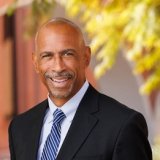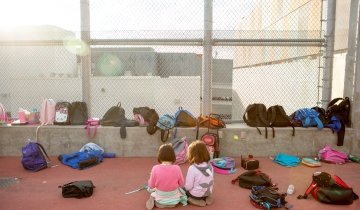In a time when change has become the new normal, educational leaders are being called to navigate uncertainty with clarity, conviction and a deep commitment to equity. On October 15 at the 4th Annual Irving R and Virginia A. Meblo Lecture, hosted by USC Rossier Professor Maria Ott, the Melbo Chair in Educational Administration, said, “As leaders, we are committed to building the relationships that promote a caring society, one that values every individual and ensures equal access and opportunity for those not fully served by our educational and societal systems.”
The lecture, “Bringing Educational Opportunity to Life for Students Today,” examined how leaders can harness this moment of transformation to strengthen their commitment to equity and opportunity for all youth. In addition, the panel discussed the legal and structural foundations that allow educators to stand firm for students and lead with purpose.

Panelists included Karla Estrada, deputy superintendent of instruction at Los Angeles Unified School District, and Guadalupe Guerrero, CEO of the Partnership for Los Angeles Schools. USC Rossier Dean Pedro Noguera facilitated the discussion, drawing out insights on how to bring educational opportunity to life for today’s students. The program’s keynote speaker, Kimberly Jenkins Robinson, founding director of the Education Rights Institute at the University of Virginia School of Law and one of the nation’s foremost experts on education law and policy, explored equal educational opportunity, civil rights and the democratic principles that underpin public education.
Robinson’s keynote presentation underscored the fact that informed leadership is essential to advancing justice for all students. Her talk addressed three questions: Why should equal educational opportunity be the aim for education, how can educators bring this robust vision of equal educational opportunity to life for students and what role should educators, staff and district leaders play in this work?
“Equal educational opportunity means very little if we cannot have some common understanding of what it is that students have an equal opportunity to receive.”
Kimberly Jenkins Robinson
Robinson stressed the importance of grounding educational work in legal principles, explaining that the law establishes standards that guide school systems and can help create common ground in a polarized time. Among the groundbreaking cases she cited, like California’s Mendez case and Brown v. Board of Education, the principle of equal educational opportunity still stands and provides a stable, unifying foundation for reform. She stated that the nation has never fully realized equal educational opportunity and that reclaiming it requires defining not only what discrimination is prohibited but also what students are entitled to receive. “I believe that equal educational opportunity also should include a substantive component where students graduate college-ready, career-ready and engaged civic participants,” said Robinson. “Equal educational opportunity means very little if we cannot have some common understanding of what it is that students have an equal opportunity to receive.”
“When we can start to measure and monitor these gaps and then start to close these gaps, we truly bring equal education opportunity to life for our students.”
Kimberly Jenkins Robinson
According to Robinson, achieving a meaningful vision of equal educational opportunity requires focusing on two components: the principle of non-discrimination and the educational aims embedded within that principle. She highlighted the importance of addressing educational opportunity gaps, which shape achievement gaps. Robinson offered a shift from focusing on achievement gaps to identifying, measuring, monitoring and closing opportunity gaps as a way to bring equal educational opportunity to life. “When we talk about opportunity gaps, I'm talking about a wholesome examination of how resources are distributed across districts,” she added. “When we can start to measure and monitor these gaps and then start to close these gaps, we truly bring equal education opportunity to life for our students.”
She added that bringing a robust vision of equal educational opportunity to life requires igniting, empowering and incentivizing everyone in the education system—from teachers and counselors to principals, district leaders and school boards—around a shared “why.” All education leaders must understand that equal educational opportunity includes both non-discrimination and ensuring a high-quality education for every student. Robinson’s message stressed that achieving equal educational opportunity is not the work of a few, but a collective commitment that begins with a shared understanding and is sustained through action.
Complete video with panelist Q&A







